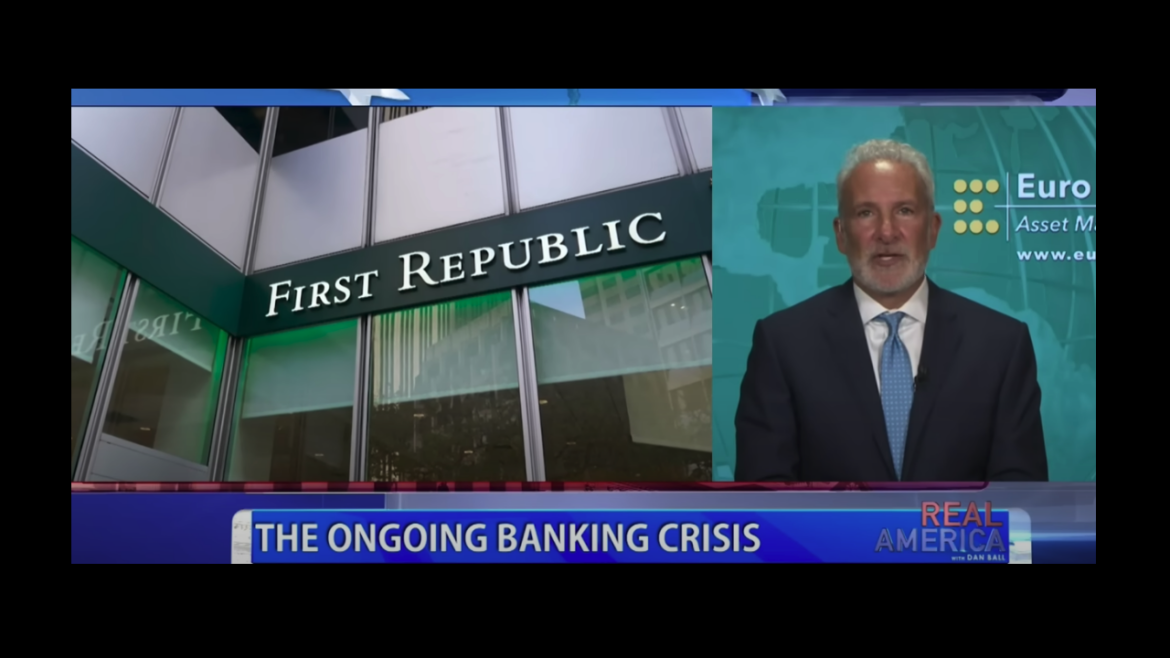Gold has all the potential to go unprecedentedly high. But silver will be gold on
Site:
Precious metals news
Physical gold investment was up by 5% year-on-year in the first quarter.Investors bought 302 tons of gold bars and gold coins in Q1 with a value of $18.4 billion. This was 14% above the 5-year average, according to the World Gold Council.
Peter Schiff recently appeared on Real America with Dan Ball to talk about the ongoing banking and financial crisis. Peter emphasized that the Federal Reserve and the US government are trying to fix a problem that they caused. And their cure is going to unleash an inflation tsunami.
What a Deal... the United States continues to rack up deficits while it sells more of its precious Strategic Oil Reserve. Why not? This is the new world today where Debts are Assets, and Oil isn't Green. And don't forget U.S. Energy Secretary wants the U.S. Military to be "All-Electric by 2030...
We bought back into silver on the 5th of May: here we explain our thesis for picking up a silver position in our trading portfolio.
May 9, 2023 - 13:00:00 PDT
Edward Morse, MD & Global Hd - Commodity, Citi Group believes that gold prices could go up to $2400 an ounce, indicating that he remains bullish on the precious metal.
Gold price is holding its own at $2,020-2,030 of the US inflation data. Economists at Commerzbank expect the yellow metal to remain elevated.
May 9, 2023 - 12:57:01 PDT
Gold prices scored back-to-back gains on Tuesday, with the yellow metal moving closer to its settlement last Thursday which marked the second-highest finish for a most-active Comex gold contract on record.
 Warren Buffett: "The Incredible Period For the US Economy Is COMING TO AN END"
Warren Buffett: "The Incredible Period For the US Economy Is COMING TO AN END"May 9, 2023 - 12:41:02 PDT
In today’s update with Mike Maloney you’ll see that the idea of ‘de-dollarization’ is going mainstream fast.
If you have an actual life and important things to do, you probably haven't been paying attention to the latest debt-ceiling theater now going on in Congress. Congress is indeed at it again, however, and the leadership from the GOP and the Democrats are fighting over how federal tax dollars will be spent over the next year. Until an agreement is reached, the GOP leadership is...
May 9, 2023 - 12:09:23 PDT
If the economy tanks in the months ahead, Powell will get the blame. If we avoid a recession, the politicians will claim credit.
President Biden is set to meet with Speaker Kevin McCarthy and other congressional leaders at the White House today, and Biden is expected to reiterate that he wants the debt ceiling — which is expected to be breached as early as June 1 — raised without any preconditions. He will not, he’s said all year, negotiate over this matter. That position may be increasingly untenable.
May 9, 2023 - 11:57:27 PDT
Please consider the NFIB Small Business Trends report for April 2023. Heading into April small business optimism was below the long-term average of 98 for 15 months. This makes 16. Small business optimism is 98.0, worse than any month of the Covid pandemic.
Federal Reserve Bank of New York President John Williams said he is monitoring how strains in the banking sector effect the US economy and left the door open to leaving interest rates on hold next month.
But she probably does worry, rightly, that having the central bank bail out the government from default in such an overt manner would send a signal..
It seems that the ‘Ponzi-scheme’ nature of the modern banking system is starting to become common knowledge…
May 9, 2023 - 08:30:20 PDT
The National Association of Government Employees (NAGE) filed a lawsuit to block enforcement of a law that sets the nation’s debt limit, arguing it is unconstitutional as a political divide over raising the borrowing cap comes to a head.
Artificial intelligence could replace 80 percent of human jobs in the coming years -- but that's a good thing, says US-Brazilian researcher Ben Goertzel, a leading AI guru."You could probably obsolete maybe 80 percent of jobs that people do, without having an AGI, by my guess.
As the government works its way through another debt showdown, the good news is that most of the federal debt is owned by U.S. shareholders. The bad news is that still leaves roughly $7 trillion in federal debt abroad.
Mortgage credit availability fell to its lowest level in a decade as lending tightened amid ongoing instability in the banking sector, according to data released on Tuesday by the Mortgage Bankers Association (MBA).
The Fed’s financial stability report comes as markets and the broader economy remain rattled by this spring’s banking crisis. Banking sector stress has shot up as a concern for stability in the financial system, according to the latest Federal Reserve survey on major risks to the economy.








